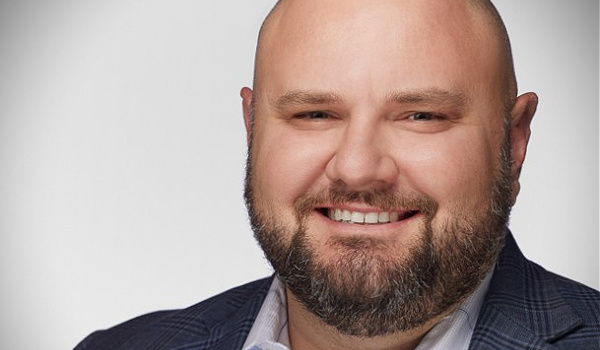After founding a business and setting out on their own, advisors must plan early to achieve enough growth to reach their first $1 billion in AUM—then it’s time to reassess.
The $1 billion AUM mark is a useful inflection point for wealth management firms, said George Svagera, vice president of business development for Orion Advisor Solutions, and it should touch off a period of review to make sure they’re ready for the next $1 billion in growth, and beyond.
“Really, I think it’s important for firms to evaluate their technology once a year—maybe not all of it, but they should go through a few components of their technology stack and evaluate them,” he said, on Growing Beyond $1 Billion AUM With the Right Tech, an Orion Advisor Solutions webinar. “You should take a look at the features of your current tech stack that are limiting you or are outdated and are causing a lot of manual work that you should review.”
Svagera works primarily with Orion’s largest clients—major broker-dealers, banks, and institutional mega-RIAs, many of whom have blown well past the billion-dollar mark. In fact, Orion serves 307 firms with more than $1 billion AUM, 43 firms with more than $5 billion and 16 firms that are over $10 billion.
The one shared characteristic all the mega-firms Svagera has encountered is a hub-and-spoke model, with a centralized home office that manages back-office, compliance, and research functions for a network of advisors who are likely out in the field and geographically dispersed. In the hub-and-spoke model, the centralized home office is often responsible for putting together the core of the advisor’s technology stack, with advisors deploying varying levels of customization depending on their technology capabilities and the home office’s flexibility.
At $1 billion AUM, firms should ask themselves a series of questions, according to Svagera:
Is Technology Limiting Your Growth?
“I talk to many firms and a lot of the times they’ll explain a process they’re using, and my next question is ‘why do you do it that way’ and many times they don’t know,” said Svagera. “Or, many times, they say ‘that’s the way we’ve always done it,’ or, in many cases, when they actually dig into why they do certain things—like why they open accounts a certain way, why they trade accounts that way, why they hold cash a certain way in their models—a lot of times it comes down to the limitations in their technology.”
Firms make decisions to engage in inefficient processes because they couldn’t use the most efficient process that they wanted when they implemented the technology.
So the $1 billion mark is a good time to look for inefficient processes and determine if there’s a technological problem at cause, or if there’s a technological solution that could be applied.
Is Technology Holding You Back from Reaching Your Full Potential?
Chances are, in any advisor’s technology stack, there is a component holding them back that could use some attention, said Svegara.
“What is your confidence level in your technology to help you reach the next goal?” he asked.
Very large wealth management firms simultaneously offer their advisors technology, processes, and support to enable organic growth, while recruiting new advisors and scouting out merger and acquisition prospects to pursue inorganic growth.
To catalyze inorganic growth, Svagera said that advisors should partner with a technology provider that provides resources that help with mergers and acquisitions.
“They should have a team of people who are dedicated to taking a look at what technology the firm you are purchasing is using, what custodian those accounts are held at, and helping you get those accounts downloaded into your portfolio accounting solution,” he said. “Do a conversion of any historical data that may be accessible in a convertible format and provide resources to help give any new advisors set up with logins, reports and branding so they can hit the ground running once the acquisition is done, or shortly thereafter, and go out there and start growing their businesses.”
In this way, having good technology to support inorganic growth also leads to stronger organic growth.
Fostering organic growth, according to Svagera, starts with making sure that advisors have all the tools they need to help drive prospects to the firm. Wealth management businesses can’t afford to take what he calls a “Field of Dreams” approach to technology and prospecting: “If we build it, they will come.”
“You need to have your marketing materials, whether it’s your website, your social media posts or your emails, tailored to the niche of the type of client you want to work with,” he said. “You need to have a clear call to action within those communications, something where that client can take that first step to engage with your firm.”
That first step has to be as simple as possible, according to Svagera, so easy that there’s little chance a prospect won’t take the firm up on it. Something as simple as creating a username and password on a client portal and a short survey about their current financial situation that doesn’t require them to dig up documentation or old tax returns or information from financial institutions.
Efficiency
For technology to help make advisors more efficient and move beyond the $1 billion AUM mark, it must be integrated, according to Svagera.
Failure to adequately integrate leads to what he calls “swivel-chairing,” where advisors and other staff may have to switch between four or more pieces of technology to complete a task. This swivel-chairing can be especially disruptive during client meetings.
But after working diligently to move towards more open integrations over the past ten years, Svagera says the wealthtech industry is in danger of regressing towards a more siloed approach with closed ecosystems.
“Integrations have become increasingly difficult in our industry,” he said. “As the best-in-breed solutions start to get bought by competing firms or custodians, the integrations tend to slow way down or stop completely. Another thing that tends to slow down any integration process is that as these technology companies have grown and expanded their services and the functionality they provide, there is starting to become more overlap with other solutions that they would normally integrate with. Also, everyone has a finite number of developers and a finite level of development resources, so it’s tough to redirect those resources to integrating rather than building out the product.”







